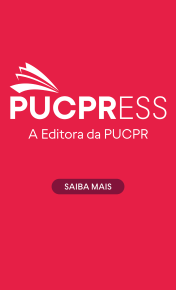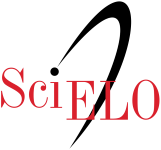Intentionality, Conceptual Content, and Emotions
DOI:
https://doi.org/10.7213/1980-5934.31.054.DS10Palabras clave:
Intencionalidade, Conteúdo conceitual, Emoções, Linguagem.Resumen
The present study aims at supporting the argument that emotions, unlike a physicalistic interpretation, cannot be reduced to the conceptual elements used in the communication or exteriorization process. The subject is based on two hypotheses: the first is that the relation between the issuance of an emotive content (emotion) and a possible mental representation presents a linguistic nature. In general terms, this means that an emotion, or the psychological content associated with it is based on the plot of other concepts. The second hypothesis is that it is not possible to refer to emotions without considering cognition from a semantic problem and, consequently, in the refusal of a realistic or anti-realistic posture in relation to the way the phenomena - internal and/or external to our consciousness - are referred. Thus, a conceptual model to understand emotions would be essential to settle the problem associated with ordinary language, realism, and the computational tendencies that comprehend the mental content in strictly syntactic terms.Descargas
Citas
BERMÚDEZ, J. L. The Notion of a Nonconceptual Point of View. In: BERMÚDEZ, J. L.; MARCEL, A. J.; Eilan, N. (Ed.). The Body and the Self. Cambridge/MA: MIT Press. 1995a. p. 153-173. COLOMBETTI, G. From affect programs to dynamical discrete emoticons. Philosophical Psychology, v. 22, n. 4, p. 407-425, 2009.
DAMÁSIO, A. O Mistério da consciência: do corpo e das emoções ao conhecimento em si. São Paulo: Companhia das Letras, 2000.
EVANS, G. The Varieties of Reference. Oxford: Oxford University Press, 1982.
GRIFFTHIS, P. Griffiths, na obra What Emotions Really Are: the problem of Pshychological Categories. Chicago: Chicago University Press, 1997.
GRIFFITHS, P. Emotions in the wild: The situated perspective on emotion. In: ROBBINS, P.; AYEDEDE, M. (Eds.). Cambridge Handbook of Situated Cognition. Cambridge: Cambridge University Press, 2008.
KANT, I. Crítica da Razão Prática. São Paulo: Martins Fontes, 2002.
McDOWELL, J. Sellars on Perceptual Experience. The Journal of Philosophy, New York, v. 95, n. 9, p. 431-450, sep. 1998.
McDOWELL, J. Mente e Mundo. Aparecida: Ideias & Letras, 2005.
MEUNIER, J.-G. “Theories and Models: Realism and Objectivity in Cognitive Science”. In: AGAZZI, E. (Ed.). Varieties of Scientific Realism. Objectivity and Truth in Science. Germany: Springer, 2017.
PERUZZO JÚNIOR, L. As antinomias Metaéticas entre cegos e não-cegos e o problema do realismo moral. Veritas, Porto Alegre, v. 61, n. 1, p. 62-74, 2016.
PERUZZO JÚNIOR, L. Realidade, Linguagem e Metaética em Wittgenstein. Curitiba: PUCPRESS, 2018.
PLACE, U. T. Is consciouciousness a brain process? In: LYON, W. (Org). Modern philosophy of mind. London: Ed. Everyman, 2002.
SELLARS, W. Science and Metaphysics: Variations on Kantian Themes. Atascadero: Ridgeview Publishing Co., 1992.
SELLARS, W. Empiricism and the Philosophy of Mind. Introduction by Richard Rorty, and a study guide by Robert Brandom. Cambridge, Mass.: Harvard University Press, 1997.
SMART, J. J. C. Sensations and brain processes. The Philosophical Review, v. 68, n. 2, p. 141-156, 1959a. Disponível em: <http://www.jstor.org/stable/2182164>. Acesso em: 24 mai. 2019.
SMART, J. J. C. The content of physicalism. The Philosophical Quarterly, v. 28, n. 113, p. 339-341, 1978. Disponível em: <http://www.jstor.org/stable/2219085>. Acesso em: 24 mai. 2019.
VELMANS, M. Consciousness and the "causal paradox”. Behavioral and Brain Sciences, v. 19, n. 3, p. 537-542, 1996.
VELMANS, M. What Perception Becomes Conscious. British Journal of Psychology, v. 90, n. 4, p. 543-566, 2010.
WITTGENSTEIN, L. Investigações Filosóficas. Lisboa: Calouste Gulbenkian, 1995.
Descargas
Publicado
Cómo citar
Número
Sección
Licencia
El autor transfiere, por medio de cesión, a la EDITORA UNIVERSITARIA CHAMPAGNAT, persona jurídica de derecho privado, inscrita en el CNPJ/MF bajo el n.º 76.659.820/0009-09, establecida en la (calle) Rua Imaculada Conceição, n.º 1155, Prado Velho, CEP 80.215-901, en la ciudad de Curitiba/PR, los derechos abajo especificados y se compromete a cumplir lo que sigue:
Los autores afirman que la obra/material es de su autoría y asumen integral responsabilidad frente a terceros, ya sea de naturaleza moral o patrimonial, en razón de su contenido, declarando, desde ya, que la obra/material a ser entregada es original y no infringe derechos de propiedad intelectual de terceros.
- Los autores concuerdan en ceder de forma plena, total y definitiva los derechos patrimoniales de la obra/material a la EDITORA UNIVERSITARIA CHAMPAGNAT, a título gratuito y en carácter de exclusividad.
- LA CESIONARIA empleará la obra/material de la forma como mejor le convenga, de forma impresa y/u on line, incluso en el sitio del periódico de la EDITORA UNIVERSITARIA CHAMPAGNAT, pudiendo utilizar, disfrutar y disponer del mismo, en todo o en parte, para:
- Autorizar su utilización por terceros, como parte integrante de otras obras.
- Editar, grabar e imprimir, cuantas veces sean necesarias.
- Reproducir en cantidades que juzgue necesarias, de forma tangible e intangible.
- Adaptar, modificar, condensar, resumir, reducir, compilar, ampliar, alterar, mezclar con otros contenidos, incluir imágenes, gráficos, objetos digitales, infográficos e hyperlinks, ilustrar, diagramar, fraccionar, actualizar y realizar otras transformaciones, siendo necesaria la participación o autorización expresa de los autores.
- Traducir para cualquier idioma.
- Incluir en fonograma o producción audiovisual.
- Distribuir.
- Distribuir mediante cable, fibra óptica, satélite, ondas o cualquier otro sistema que permite al usuario realizar la selección de la obra o producción para recibirla en tiempo y lugar previamente determinados por quien formula la demanda y en los casos en que el acceso a las obras o producciones se haga por cualquier sistema que importe en pago por el usuario.
- Incluir y almacenar en banco de datos, físico, digital o virtual, incluso nube.
- Comunicar directa y/o indirectamente al público.
- Incluir en base de datos, archivar en formato impreso, almacenar en computador, incluso en sistema de nube, microfilmar y las demás formas de archivo del género;
- Comercializar, divulgar, vehicular, publicar etc.
- Otro tipo de modalidades de utilización existentes o que vengan a ser inventadas.
- Los autores concuerdan en conceder la cesión de los derechos de la primera publicación (carácter inédito) a la revista, licenciada bajo la CREATIVE COMMONS ATTRIBUTION LICENSE, que permite compartir el trabajo con reconocimiento de la autoría.
- Los autores autorizan la reproducción y la citación de su trabajo en repositorios institucionales, página personal, trabajos científicos, entre otros, desde que la fuente sea citada.
- La presente cesión es válida para todo el territorio nacional y para el exterior.
- Este término entra en vigor en la fecha de su firma y es firmado por las partes en carácter irrevocable e irretractable, obligando definitivamente las partes y sus sucesores a cualquier título.
- La no aceptación del artículo, por la EDITORA UNIVERSITARIA CHAMPAGNAT, hará que la presente declaración sea automáticamente nula y sin efecto.












